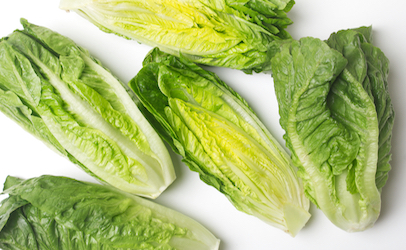Consumer Reports warns against eating any romaine lettuce
Food safety experts at Consumer Reports are advising people in the U.S. and Canada to stop eating romaine lettuce.
During the past seven weeks, 58 people in the U.S. and Canada have become ill from the strain of E. coli O157: H7. One person in each country has died. In the U.S., the infections have been confirmed in 13 states — California, Connecticut, Illinois, Indiana, Michigan, Nebraska, New Hampshire, New York, Ohio, Pennsylvania, Virginia, Vermont and Washington.
 Until the cause of the current outbreak is known and the implicated food is removed from the supply chain, CR’s experts say consumers should avoid eating any romaine lettuce. It is a recommendation not yet made by either the U.S. Food and Drug Administration or the federal Centers for Disease Control and Prevention (CDC).
Until the cause of the current outbreak is known and the implicated food is removed from the supply chain, CR’s experts say consumers should avoid eating any romaine lettuce. It is a recommendation not yet made by either the U.S. Food and Drug Administration or the federal Centers for Disease Control and Prevention (CDC).
The source of the E. coli food poisoning is being investigated by FDA and CDC, along with public health officials in Canada. Five people in the U.S. received hospital care, and one has died, according to CDC. There has also been one death reported in Canada.
Canadian health authorities identified romaine lettuce as the source of the outbreak in their country, and since Dec. 14 have been advising people in the country’s eastern provinces to consider eating other types of salad greens until further notice. They said sick people reported eating romaine from a variety of locations, including grocery stores, restaurants and private homes.
In the U.S., government health officials are investigating the outbreaks, but have stopped short of recommending people avoid romaine lettuce or any other food.
“Even though we can’t say with 100 percent certainty that romaine lettuce is the cause of the E. coli outbreak in the U.S., a greater degree of caution is appropriate given that romaine lettuce is almost always consumed raw,” according to James Rogers, Ph.D, who is CR’s director of food safety and research.
“While anyone can get sick if they are infected with this strain of E. coli, young children, the elderly, and anyone who has a condition that weakens the immune system, such as cancer or diabetes, are at a greater risk,” Rogers added. He advises that people in these groups should be particularly vigilant about avoiding romaine lettuce.
According to the CDC, the type of E. coli making people sick genetically matches the bacteria involved in the Canadian outbreak. The U.S. investigators say that means the same food source is likely involved. Still, the CDC says it does not have enough information to recommend people in the U.S. avoid any particular food.
Jean Halloran, Director of Food Policy Initiatives at Consumers Union, the policy and mobilization division of Consumer Reports, said, “The FDA should follow the lead of the Canadian government and immediately warn the public about this risk. The available data strongly suggest that romaine lettuce is the source of the U.S. outbreak. If so, and people aren’t warned, more may get sick.”
Neither the U.S. nor Canadian health officials have provided information on where the suspect romaine lettuce was grown or processed. So for now, Consumer Reports says people should assume that any romaine lettuce, even when sold in bags and packages, might be contaminated.
Do not buy romaine lettuce and don’t use any that you may have in your refrigerator until there is more information on the source of contamination, CR says. Consumers should also check salad blends and mixes, and avoid those that contain romaine.
No comments:
Post a Comment